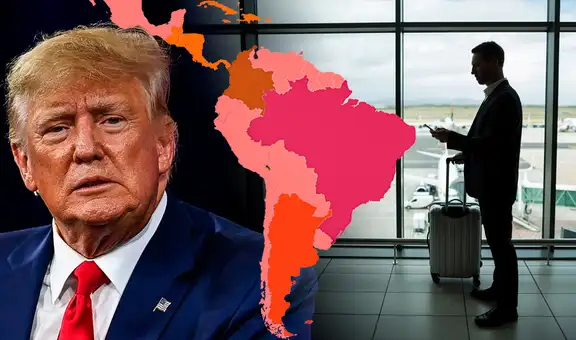Así serán los destinos turísticos más populares de Latinoamérica según la IA
Explora cómo la inteligencia artificial está transformando el turismo en Latinoamérica al predecir las tendencias y cambios que definirán los destinos más atractivos de la región en los próximos años.
- China desafía a EE.UU. con su oferta de cable submarino a un país de América Latina para dominar su infraestructura digital
- Ranking de la OCDE revela de qué país de América Latina salen más migrantes a países desarrollados: no es Venezuela

La inteligencia artificial (IA) está revolucionando la industria del turismo al ofrecer predicciones precisas y personalizadas sobre los destinos que ganarán popularidad en los próximos años. Utilizando datos de tendencias actuales, análisis de redes sociales y patrones de búsqueda, la IA nos proporciona una visión fascinante de los futuros destinos turísticos más populares en Latinoamérica.
PUEDES VER: Elecciones presidenciales 2024 en República Dominicana EN VIVO: resultados oficiales JCE y conteo de votos

1. Cartagena, Colombia
Experiencia cultural y playera. Cartagena, con su combinación de historia colonial y playas paradisíacas, se convertirá en uno de los destinos más codiciados. La IA destaca el creciente interés en el turismo histórico y cultural, impulsado por la restauración de edificios coloniales y una vibrante escena gastronómica.
TE RECOMENDAMOS
ÁLVARO PAZ DE LA BARRA EN VIVO Y MIRTHA VÁSQUEZ SE SALVA | ARDE TROYA CON JULIANA OXENFORD
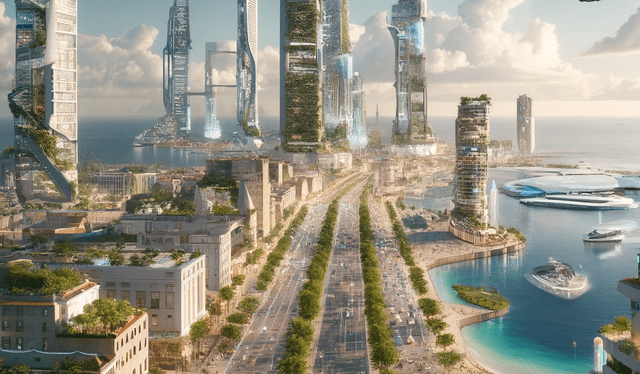
Cartagena, Colombia, en el año 3000. Foto: ChatGPT IA
2. Tulum, México
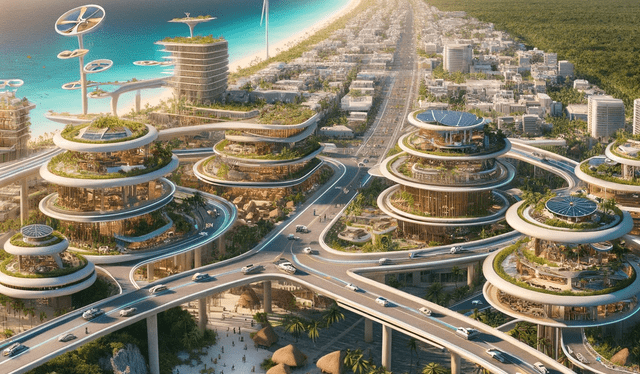
Tulum, México, en el año 3000. Foto: ChatGPT IA
3. Mendoza, Argentina
Enoturismo y aventura. Mendoza se está posicionando como el destino ideal para los amantes del vino y la aventura. Las predicciones indican un aumento en el interés por el enoturismo, acompañado de actividades al aire libre como senderismo y ciclismo en los majestuosos Andes.
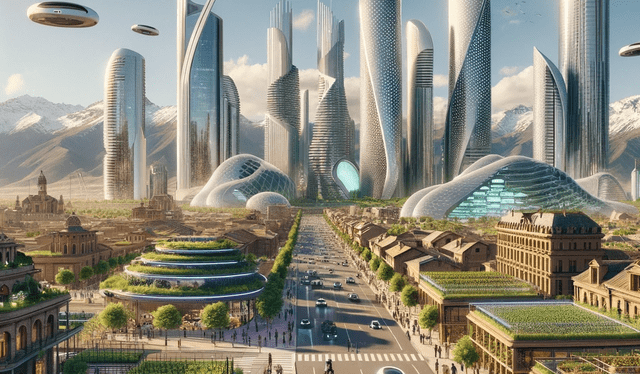
Mendoza, Argentina, en el año 3000. Foto: ChatGPT IA
4. San José, Costa Rica
Destino de naturaleza y bienestar. La capital de Costa Rica está destacando por su enfoque en el turismo de bienestar y la naturaleza. Con una biodiversidad increíble y una cultura de sostenibilidad, San José atrae a aquellos que buscan una conexión profunda con la naturaleza y el bienestar personal.
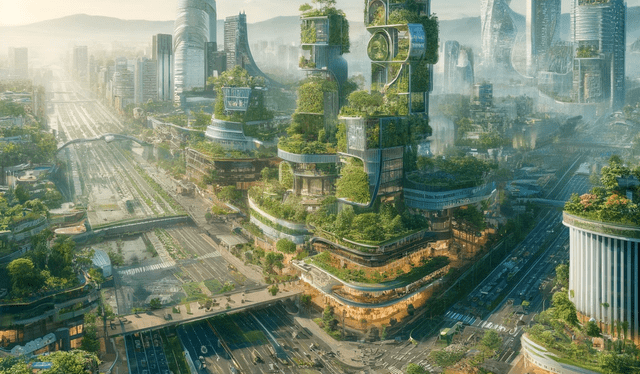
San José, Costa Rica, en el año 3000. Foto: ChatGPT IA
5. Cusco, Perú
Historia inca y turismo espiritual. Cusco, la puerta de entrada a Machu Picchu, está ganando popularidad no solo por su patrimonio histórico, sino también por su creciente oferta de turismo espiritual. La IA predice un aumento en los retiros de yoga y meditación, aprovechando la energía mística de los Andes.
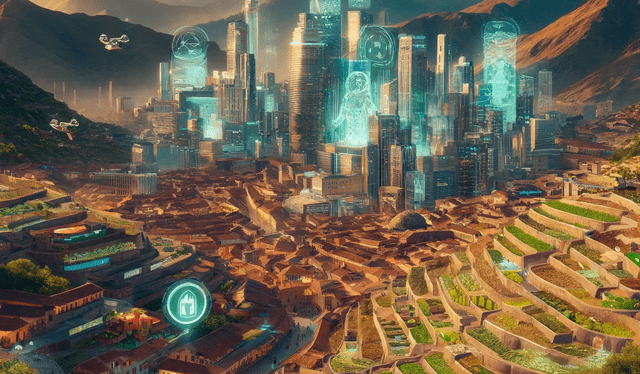
Cusco, Perú, en el año 3000. Foto: ChatGPT IA
6. Valparaíso, Chile
Arte urbano y vida nocturna. Valparaíso está en camino a convertirse en un epicentro del arte urbano y la vida nocturna. La ciudad, conocida por sus coloridos murales y su vibrante escena cultural, atrae a jóvenes viajeros y artistas de todo el mundo.
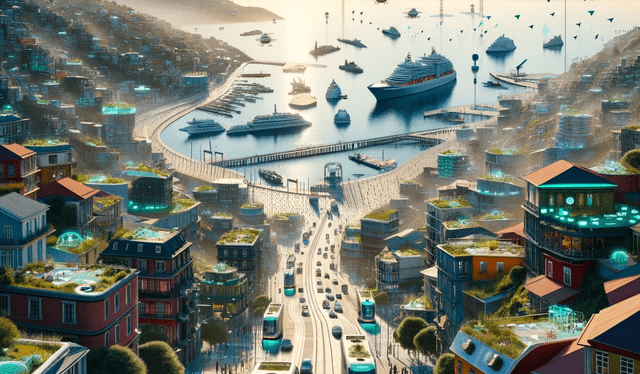
Valparaiso, Chile, en el año 3000. Foto: ChatGPT IA
7. Río de Janeiro, Brasil
Festividades y playas ícono. Río de Janeiro sigue siendo un destino ineludible, especialmente por sus festividades y playas icónicas. La IA señala un resurgimiento del turismo pospandemia, con un enfoque en el Carnaval y las playas de Copacabana e Ipanema.
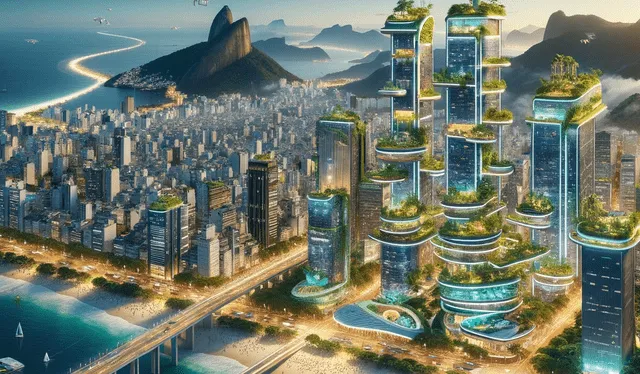
Rio de Janeiro, Brasil, en el año 3000. Foto: ChatGPT IA
8. Punta del Este, Uruguay
Lujo y relajación. Punta del Este está consolidándose como un destino de lujo en Sudamérica. La IA predice un aumento en el turismo de alta gama, con una oferta robusta de hoteles, boutique, casinos y playas exclusivas.
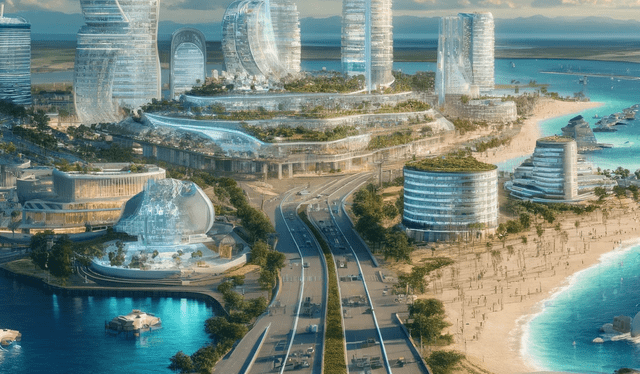
Punta del Este, Uruguay, en el año 3000. Foto: ChatGPT IA
9. Quito, Ecuador
Patrimonio y modernidad. Quito, con su impresionante casco histórico y su vibrante vida moderna, está destacando como un destino turístico emergente. La IA resalta el balance perfecto entre la preservación del patrimonio y las ofertas turísticas modernas.
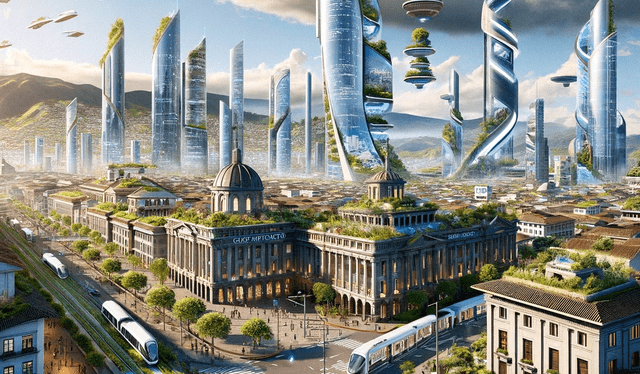
Quito, Ecuador, en el año 3000. Foto: ChatGPT IA
10. La Paz, Bolivia
Aventura y cultura indígena. La Paz, con su altitud vertiginosa y su rica cultura indígena, está atrayendo a viajeros aventureros. La IA prevé un auge en el turismo de aventura, con exploraciones desde el salar de Uyuni hasta los caminos de montaña más desafiantes.
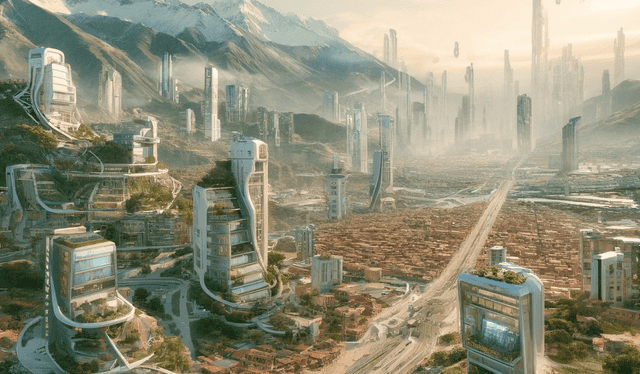
La Paz, Bolivia, en el año 3000. Foto: ChatGPT IA





